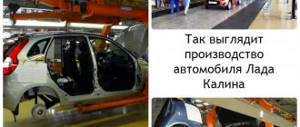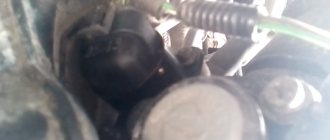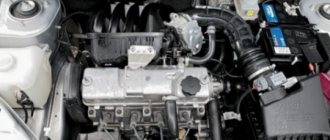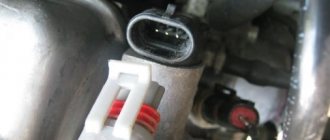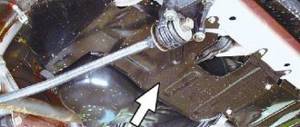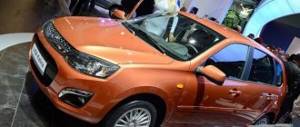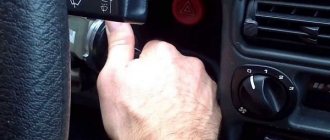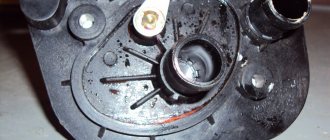Many car owners are wondering what a rough road sensor is for and what functions it performs. This newfangled device appeared relatively recently, so it is not surprising that many motorists simply have not heard of its existence. Today, this cunning device is found on almost all modern domestically produced cars and on some foreign cars. So, what is a rough road sensor for and how does it work? This is what we will talk about today.
brief information
In fact, not all motorists know about the true purpose of the rough road sensor. So if you are one of them, don't be discouraged. In fact, this strange device is surrounded by many rumors and even legends with which car owners try to explain its presence in the design of their vehicle.
Most often, motorists consider the main task of this sensor to be limiting speed while driving on uneven roads. But in fact, this opinion is fundamentally wrong and is not at all related to the real purpose of the device. Remember: this device has absolutely nothing to do with the speed of movement on bumpy surfaces. To be more precise, the sensor concerns this problem only indirectly. At least it won't signal if you drive off-road at top speed.
Then why do you need a rough road sensor? You might be surprised by the answer to this question. However, in reality it is necessary to temporarily stop the cylinder misfire diagnostic system. In simple terms, it disables certain functions of the car so that the check engine light on the dashboard stops systematically lighting up.
see also
Comments 30
I don’t know how the rough road sensor is connected to the knock sensor, but I always thought that it was needed to correctly monitor misfires in the cylinders...
When driving on uneven roads, shocks from the suspension can affect the uniform rotation of the crankshaft, through which misfires are monitored using the crankshaft sensor. (continuous monitoring of changes in the angular speed of rotation of the crankshaft after the power stroke). In order to eliminate erroneous data on misfires, a rough road sensor was introduced into the system, with a signal from which when driving over bumps, holes and, for example, a gravel road, the control of misfires is suspended...
something like this in my understanding...
This is true! Well, he doesn’t consider road impacts to be detonation. so, in principle you are right.
Do all Viburnums have such a sensor? And it feels like I fell from the moon. First time I see him.
Not at all. Euro 3 and 4, but they are no longer on the electronic gas pedal.
So I must have it somewhere too. Why is it even needed?
What it is and how it works is described in detail in this article: autowin.ru/index.php?city…od=news&menu=full& >but briefly here: It is needed so that the DD (Detonation Sensor) does not consider detonation, knocks from the suspension and everything else on a bad road, thereby not changing the Ignition Advance Angle.
Maybe someone removed it, you can drive without it.
Thank you for enlightening me! I'll read it.
I screwed the spacers to the ear in place of the gas stop, although the sensor is vertical, I've been driving it for a year now
Because of the body reinforcements and spacers, there is barely enough space to tighten the support to the body. Alas so =(
source
Working principle of the rough road sensor
So, let's take a closer look at the purpose of this device and its functions. From the name of the sensor it becomes clear that it somehow reacts to the roughness of the road. This is necessary for improved operation of the knock sensor, which is installed on all engines starting from Euro 3. In other words, knowing the environmental class of the car, you can understand whether it has this device. At the moment of hitting an obstacle, the knock sensor reacts to incoming vibrations, mistaking them for dangerous manifestations. At the same time, he completely unreasonably slows down the ignition.
As a result, part of the fuel burns while in the catalyst and exhaust manifold, which negatively affects the condition of these spare parts. In addition, engine efficiency and other important indicators significantly decrease. It is to prevent such phenomena that a rough road sensor is installed. It is triggered the moment you hit a bump and transmits a signal to the controller.
Checking the ABS sensor | Topic author: Shayla
Very well described how to check the ABS sensor https://karabas-barabas.narod.ru/53.html
Sudevi Hello everyone! I would like to share my experience in checking the rear ABS sensors of a Chevrolet Captiva. A little background... At one point, the car’s “garland” on the instrument panel came on, including the ABS indicator. Computer diagnostics in one of the reputable car service centers in the city of Bryansk showed a malfunction of the left rear ABS sensor. This sensor was replaced with a new one No. 06-S411 OPTIMAL by the owner himself. But the “garland” did not go out. That's when the owner approached me. The result of computer diagnostics was a malfunction of the right rear sensor. And the owner of the car already wanted to purchase a second ABS sensor, but I convinced him that he needed to first check whether the sensor was really dead. So I want to tell you what I measured with a multimeter. On the Internet, when I was looking for sensor resistance values, as luck would have it, the following phrases were mainly heard: “I measured the resistances of all sensors. For one, this resistance was two times less than for the rest.” Well, no one admitted what value of resistance they intended. In general, regarding Captiva, there is somehow very little information on ABS sensors or I was looking incorrectly. For other brands of cars, resistance was indicated from 1000 to 1250 Ohms. Some have from 900 to 1100 ohms. Anyway. I want to write you the very specifics, exactly what I myself have measured. I'll start with the faulty ABS sensor, which was replaced with a new one. And so... Resistance = 71 Ohms. It rings in both directions and 71 ohms in both directions. Right rear sensor. He is native and has never changed. Resistance = 786 Ohms. It rings exclusively in one direction. Left rear sensor. A new one that replaced the faulty one. Resistance = 835 Ohm. And in the same way, it rings in one direction. I also measured the voltage on the supply wires. I cut off the female chip from the faulty sensor, cleaned the ends and measured it normally, without aiming the multimeter probes at the male chip. I measured it with the ignition on and off. On both sides of the suspension, with the ignition on, it showed 11.9 V, and with it off, 0.05 V. All chips were treated with GUNK ELECTRONIC CLEANER electronics cleaner, purged with air and connected - voila, the “garland” went out. The ABS warning light was still on, but when the car moved briefly, it also went out. I would like to note one more point, perhaps important, the battery was fully charged to 12.8 V. This is a 100% battery charge. Maybe these numbers will be useful to someone. Never rush into buying new ABS sensors until you have tested them yourself. After all, it was only necessary to clean the contacts of the sensor connectors, and this is absolutely not difficult.
Yaroslav () Errors: P1396 ABS rough road sensor, incorrect data P1396 ABS wheel speed sensor signal deviation P1397 No signal from ABS wheel speed sensor
SYMPTOMS OF ABS UNIT MALFUNCTION: If during diagnostics there is no connection between the diagnostic equipment and the ABS unit (the computer does not see the unit) or error 01203 pops up - Electrical Connection between ABS and Instrument Cluster 03-10 - No Signal - Intermittent https://www.elektrik- avto.ru/publ/remont_bloka_abs_8e0..
Sudevi ABS/ABS sensor in a car.
Electromagnetic type ABS sensors are installed on the wheels of the car and are part of the car's anti-lock braking system. The function of the sensor is to measure the wheel speed. The object of measurement of the sensor is the signal toothed disk, which is mounted on the wheel hub. If the ABS sensor is faulty, the warning light on the control panel does not go out after starting the engine. The technology for determining the functionality of the sensor is to measure the resistance between the sensor contacts; if there is a malfunction, the resistance is zero.
Roman () About parking sensors topic
Sudevi Roman, very useful information. Thank you. I'll create a topic on parking sensors.
How the device works
Where is the rough road sensor located? Depending on the specific model of the machine, the device can be fixed on suspension elements, frame or side member. It works according to the mechanism of a piezoelectric element, that is, it is triggered exclusively by vertical vibrations. This makes it possible to effectively detect the passage of an unevenness and promptly report it to the appropriate controller.
Many car owners make the same mistake. If you disconnect the rough road sensor, you will not notice any significant changes immediately. But after some time, the usual fuel consumption will increase noticeably, and “lumbago” in the muffler will periodically begin to appear. As a result, the catalyst will be damaged with all the ensuing consequences. So, as you can see, the normal operation of the rough road sensor is quite important.
Here are some technical specifications for interested car owners:
- operating voltage - 5 V;
- maximum current in the network - 20 mA;
- performance is maintained at temperatures from -40 to 105 degrees;
- maximum resistance of the output connector - 0.3 Kom;
- acceleration limits from -5 g to 5 g.
When and why did the sensor appear?
This device, unknown to many car owners, is found on most modern cars. All cars began to be equipped with a rough road sensor after stricter environmental requirements, and especially after the mass introduction of exhaust gas catalysts and the Euro 2 standard.
And all this is because unburned fuel quite quickly provokes failure of the catalyst. If the engine detects a misfire in a certain cylinder, the supply of fuel to it is stopped, and this is done to preserve the integrity of the catalyst.
If misfires are detected in different fragments, the “check engine” light on the dashboard lights up. But if the same thing happens, but with the participation of a rough road sensor, the light does not turn on.
Diagnostics
You can check the operation of the sensor in two stages. The first step is to carry out ordinary monitoring of the system using standard devices - a scanner or a laptop with a special program. On domestic cars you can encounter several errors when the sensor breaks down:
- P1616 - reduced signal level;
- P1606 - the impulse has left the limit;
- P1617 - pulse value too high.
Usually, this is quite enough to identify the cause of the light bulb. But to determine the exact problem, you can conduct a more detailed diagnosis. To do this you will need the DST-2M device. Although you can use other devices with identical operating principles. At its core, it is a scanner with advanced functionality. It is also capable of detecting the response of the rough road sensor.
If this device is subjected to mechanical action, for example, by knocking on it, then it will transmit some kind of signal, and the scanner will show the speed level - g. It is noteworthy that this sensor is considered quite sensitive, so it should respond to even minimal rocking of the car.
Replacing the device
Installing a new device is actually quite simple. To do this you will need a minimal set of tools and very little time:
- disconnect the battery;
- compress the spring clamp of the device;
- remove the cable block from the sensor;
- unscrew the fastening screws;
- remove the sensor, install a new one and do all the same manipulations in reverse order.
This is how the rough road sensor is changed on most domestic cars; on foreign cars this process may look a little different.
Replacement
Installing a new sensor is not a difficult job. To carry it out you will need a minimum of tools, as well as a little time:
- The battery turns off;
- The spring clamp of the sensor is compressed;
- Remove the wire block from the sensor terminals;
- A pair of mounting screws is unscrewed;
- The sensor is removed and a new one is installed in the reverse order.
Thus, work to replace the sensor is carried out on Lada Kalina and Lada Priora. On machines of other brands and models, this work may be performed differently.
Selecting a new device
If you are the owner of a foreign car, then give your preference to the original sensor provided by official suppliers. Even for the most expensive cars, its cost will be relatively low. So you shouldn’t save money and buy a Chinese device, because no one will give you a guarantee on it.
For domestic cars, rough road sensors are produced by several companies. The most famous are Kaluga devices and those devices that were produced in Zelenograd. And those who prefer German quality can choose a device from Bosch.
Lada Kalina Sedan 1.6 16V Blueberry › Logbook › 44. Rough Road Sensor (RSD) Need help.
There are questions and there is a problem with the Rough Road Sensor (RSD).
I'll start with the problem. 0. I installed a spacer from Autoproduct without an engine mount, there is no place for attaching the DND. Who acted how, are there any options?
And now the questions. 1. Please tell us about this sensor, is it possible to turn it over or rotate it by 90%? 2. How important is its exact location? 3. How firmly should it be tied (screwed) to the body. 4. Where can it be secured or moved?

